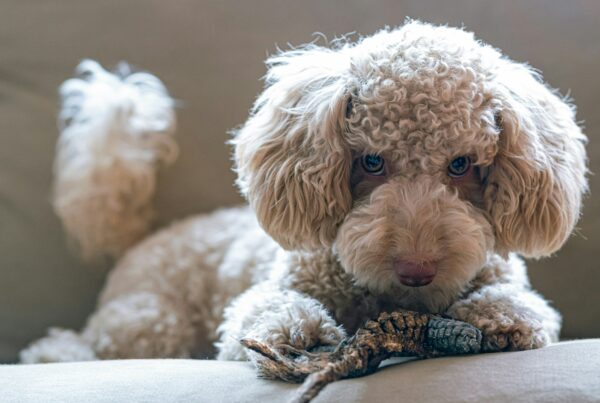Stereotypes are unfortunately part of the way we work every day; we do generalizations without really thinking about it. Studies show that often these beliefs are wrong. Our dogs are also no different – the most common dog breed ideas cause thousands of dogs to live in shelters every year simply because people have a negative view of that breed.
Intentional Dog Breeding for Traits
We judged a large number of creatures – whether humans or dogs – based on the actions of a remarkable number of creatures. And these common dogmas can be as harmful to dogs as they are to humans- say the overbreeding of purebreds due to a “cuteness factor”.
The acquisition of pets is rising since the pandemic lead to lockdowns in most countries. When seeing the value of touch (from another fellow human being or pet) leads to more adoption and purchasing of pets- its not necessarily a a bad thing. Empty shelters- that’s every foster parent and animal lovers dream come true. What we are referencing is the short term acquisition of pet results in a medium to long term detriment to a pet that ends up getting re-homed a few times or worse- euthenised. We even saw it happen at the beginning of covid where people were abandoning their pets because the fear that they might be spreading covid. Some people will see a trait from a dog (big round eyes, smushed nose) and over-breed for that characteristic or also on the other side is those with the less desired traits because of its negative connotations (less cute), and that gene/characteristic diminishes the attraction.
Why Is There a Breeding Dog?
Before we start to question some of these common ideas, let’s look at why they exist in the first place and how some of us believe these false ideas.
The first and foremost reason is the purpose of the dog. A handful of pet parents prefer certain dogs for protection, guarding, and even fighting dogs, and other activities involving the dog acting as a threat and obstacle. Therefore, some large, sturdy and independent breeds mean that they are the most dangerous dogs for a long time.
Next comes the dog’s genetics. While some of us may not be inclined to admit this, some forms of genetics are often aggressive. Researchers have found that the hormones that trigger the aggression may be, as well as genetic predisposition to aggression. However, these studies are not in line with our view of certain species (good little dogs that are considered harmless can actually be very genetically aggressive), which further proves our bias.
Third, the power of the dog. While virtually any dog can be aggressive in certain situations, those that can cause the most damage are usually selected. Some strong dogs are more likely to cause more damage than others. They will be bigger in size, have bigger muscles and strength. Most importantly, they will have a large jaw that is strong enough to bite. The Kangal dog, a 743 psi biting dog, can do more damage than the Yorkshire Terrier, but that doesn’t mean it’s too aggressive.
Overcoming Stereotypes:
To overcome dogma, we must first look at the facts. However, not all facts are the same. For example, just because statistics show that large numbers of bites are caused by Rottweiler does not mean that Rottweiler can be aggressive and bite people for no reason.
The number is probably higher because the owners, as discussed above, prefer this species for protection and may be trained to attack humans or other animals, while no one can train a Yorkie to attack humans.
Instead, we should look at other factors associated with dog safety. There are many factors to consider, one of which is that a good dog can be trained to prevent any unexpected behavior. Trainers and other dog specialists also often evaluate dog breeds generally for their behavior, including dog stability, shyness, aggression, and friendliness and the dog’s natural sense of security.
Two most stereotyped dog breeds TODAY
Let us preface that before the Pit Bulls it was the Doberman Pitchers and before that it was a different breed.
1. Pit Bulls
You have correctly predicted that this will be the first on the list in terms of stereotyped dogs for aggression. The media has become so obsessed with pit bulls (all of them) lately that it’s hard to know whether we should really worry or not. Although there are a few “types” of bullies, these dogs are often classified as “pit bulls” in the media, so we view them that way here.
2. Rottweiler
Whenever you think about the Rottweiler, one conjures up criminals in movies with big Rottweiler protecting their property, or fighting dogs like in the movie Amours Paros (2000). This dog has long been associated with screaming, chasing, and excessive drops. All of this is a Hollywood theory, however, and the fact is that Rottweiler are not just trained assassins from birth as a popular myth that is often portrayed.
5-Mutts and Mixed Types
About 8 million animals enter shelters and rescue each year, according to the ASPCA, most of them “mutts,” or mixed animals.
About three million of those animals are killed each year because they cannot find a home, and it is believed that most of those animals are mixed dogs.
The sad part is that people often look for a full-fledged dog because they think they know the breed’s history, what to expect from a dog, and can consider a dog’s background or genealogy. That may all be true, but mixed dogs may be healthier than breed dogs in some cases (but may be healthier in some cases).
Breeding dogs are also a source of concern for pet owners because they “do not know what to expect” from dog behavior. What if the dog is part of the pit bull / Doberman / Chihuahua? As you have learned, those breeds are “not bad,” they are simply notorious for their dogma.
In (Mainly) About the Pet Parent
After discussing the different dog theme above, you probably see the theme here. It seems that almost everything is about the dog parent, not the dog (for the most part).
We write a 900+ words blog about When Talking About Dog Services, and use the character counter to count characters.


